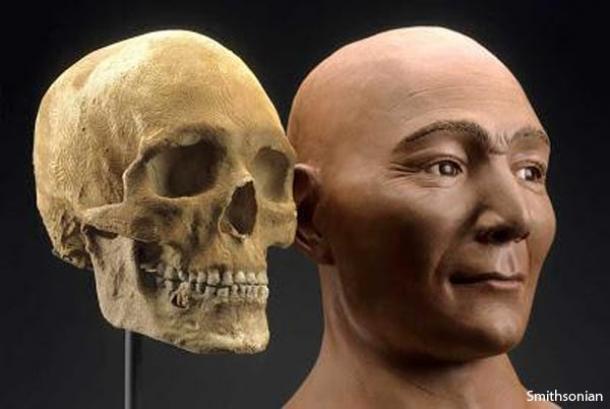 |
| The "first" reconstruction of Kennewick Man with more "European" features . |
 |
| Another "update" of Kennewick Man, now appears more "Asian" , but not resembling any Native American. |
NOTES AND COMMENTS:
*** The Libs are renaming Columbus Day to 'Indigenous Peoples Day' -- fantasizing that if Columbus hadn't landed in America then the U.S. would still be populated by stone age Indians with no Europeans here. (1)> From 1996 to 2004, federal agencies spent millions of dollars to unsuccessfully defend this position in the Kennewick Man litigation. More than the Kennewick Man skeleton is at stake. All those here before European contact in 1492 would fall under the domain of modern American Indians. If NAGPRA is amended, public policy would sanction only a religious view and explanation of the continent's prehistory. Scientific access to and factual understanding of prehistory will be denied on tribes' religious grounds. (2)> The newest cry of oppression against scientists is that Indians are using NAGPRA to cover up the new evidence that the Americas was first colonized by Europeans. “For instance, in 1993, Robson Bonnichsen — a Kennewick Man plaintiff — found human hairs at a 10,000-year-old site in Montana. The Bureau of Land Management forbade DNA studies, Lanna says. He lists three other cases in which western U.S. skeletons at least 8,000 years old reportedly showed Caucasoid characteristics like Kennewick Man. Two were returned to tribes, and one remains in limbo.” (Lee, 1998) These sentiments can be heard in the testimony of Congressman Doc Hastings, R-Wash. in front of Congress; he was arguing to revise NAGPRA. He points out that the Indian communities hold so much power over the scientific community due to the vague nature of NAGPRA, so by revising it Congress would be “restoring a sense of balance and equal treatment to federal policy.” (Hastings, 1997) Behind the whining of scientists about the choke hold Indians have on them, there is a larger question of racialized discourse.
No comments:
Post a Comment